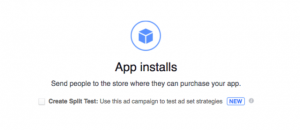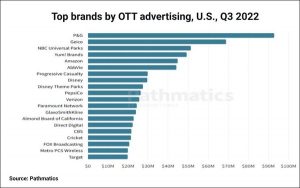When it comes to digital marketing, one of the most difficult things for business owners and marketers is to measure the ROI in their social media efforts. By now, brands and businesses realize social media is not optional – but critical – to tracking different interactions with potential customers and loyal fans. However, while you know social media is pertinent to the marketing mix, if you feel like you’re throwing money into a black hole – you’re not alone.
Start by educating yourself. Measurement is only effective if you know what to measure and why. It might be useful to create a social media audit sheet that accounts for performance you deem important. There’s an abundance of metrics to gauge performance on and it is possible to attach a number to your social media growth efforts by understanding these four actions:
- Clearly define your social media campaign goals
- Use social media insight metrics to measure campaign success
- Set-up goal tracking in Google Analytics
- Monitor and report
Clearly define your social media campaign goals
Before you can track and measure your ROI in social media marketing, you need to determine your social media goals so you know which factors you’re measuring and what success looks like. What are you trying to accomplish or gain through these social channels? And which channels are most relevant to those goals?
Social media can serve a variety of purposes and can be measured in a variety of ways, through customer acquisition, lead generation, clicks, revenue, or contest entries, for example.
With any data you’re collecting, whether it be quantitative or qualitative, the most important things to ask yourself are “What can I do with this?” and “What are my insights?” If you can’t do anything with your data and you’re not gleaning actionable business takeaways from it, then you should question why you’re measuring it in the first place.
If you need some help determining goals, I recommend using the S.M.A.R.T goal framework. You want to ensure that the goals you are setting are specific, measurable, achievable/attainable, realistic/relevant, and timely. For example, rather than simply saying that you want to increase your leads, set a numerical value and a deadline for this, such as aiming to have 25 leads per week by the end of your first quarter. This is an effective way to start measuring ROI in social media marketing.
Use social media insight metrics to measure campaign success
The next step is to align your social media campaign goals to actual metrics and behaviors you can measure.
It is important to remember that while every business owner’s ultimate goal is to increase profits, not receiving an immediate return on investment does not mean that your social media marketing efforts are a failure. The big picture can be broken down into smaller, bite-sized goals.
For businesses looking to map revenue to social media, your intermediate social media goals might mean customer signups or free trials. Or perhaps you’re trying to measure engagement, then what is the practical form of engagement you want to track? Replies or comments? Clicks? Here are a few suggestions you can put in your social media audit of behaviors to measure, based on a few common social media goals:
Goal No. 1: Increase social media engagement
Social media metrics to measure: Likes, Shares, Comments, Retweets, Mentions, Favorites
How many people are participating, how often are they participating, and in what forms are they participating?
Goal No. 2: Drive traffic to website
Social media metrics to track: URL Shares, Clicks, and Conversions.
Are people moving through social media to your external site and what do they do once they’re on your site?
Goal No. 3: Increase brand awareness
Social media metrics to measure: Follower growth rate, percentage change over time in followers/likes, Twitter sentiment, reach by region, clicks by region.
How far is your message spreading?
Set-up goal tracking in Google Analytics
Our ability to retain and convert your audience depends on how informed you are about their behavior on your site. Nearly every single goal is measurable if you adopt the right approach. Google Analytics is a powerful (and FREE) tool that you can use to set up trackable goals and monitor how often visitors complete the actions you define. For help creating and configuring goals in Analytics, read this tutorial. For help configuring Google Analytics for your social team, read this tutorial.
Monitor and report your social media ROI
The fourth step is to report your results. The point of tracking your ROI in social media marketing isn’t just to prove your social campaigns are valuable, it’s to increase their value over time. By using your initial findings, you can set a baseline for future measurements. Go back and take a look at the goals of your specific campaign and evaluate how they tie into the organization’s overall goals.
Whenever possible, try to find out the competitor’s numbers so you can get better insight into your own performance and benchmarks. If you have 5,256 fans on Facebook the number might be meaningless, but in context of your competitor having 2,718 fans you may get some insights.
Lastly, don’t sweat it if something is not working, as long as you’re updating and adapting your strategy constantly, taking into account the analytics data that you’re tracking. Don’t be afraid to ask questions, dig deeper, and challenge the way things have been done in the past.
There can be some differences in the way you view progress. This article helps you create a custom social media report based on stats and timeframe that are most valuable to you.
If you need additional help in setting effective social media campaign goals and finding value in social media ROI, consider reaching out to experts at Social Media Beast.
Digital & Social Articles on Business 2 Community(37)






